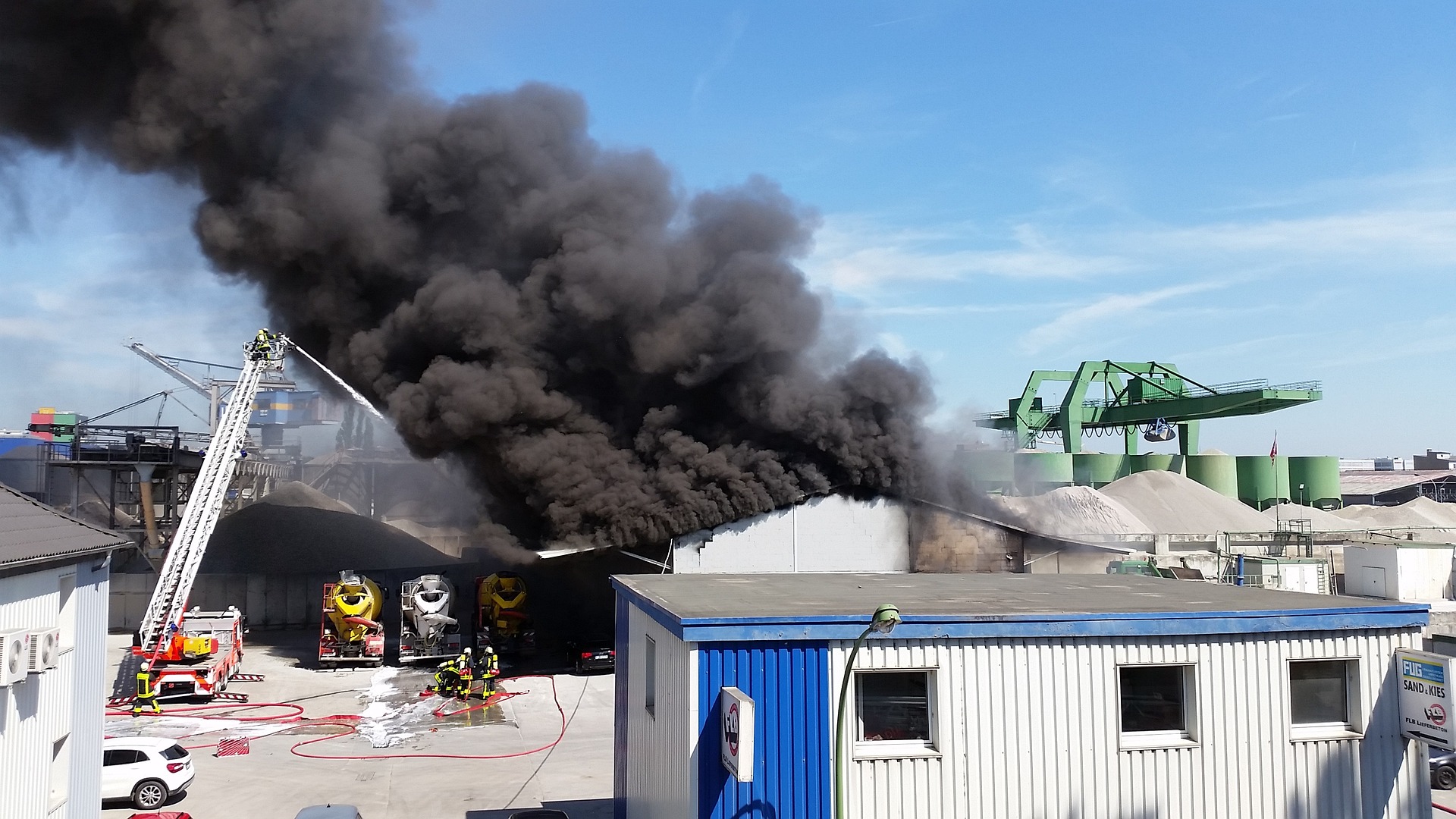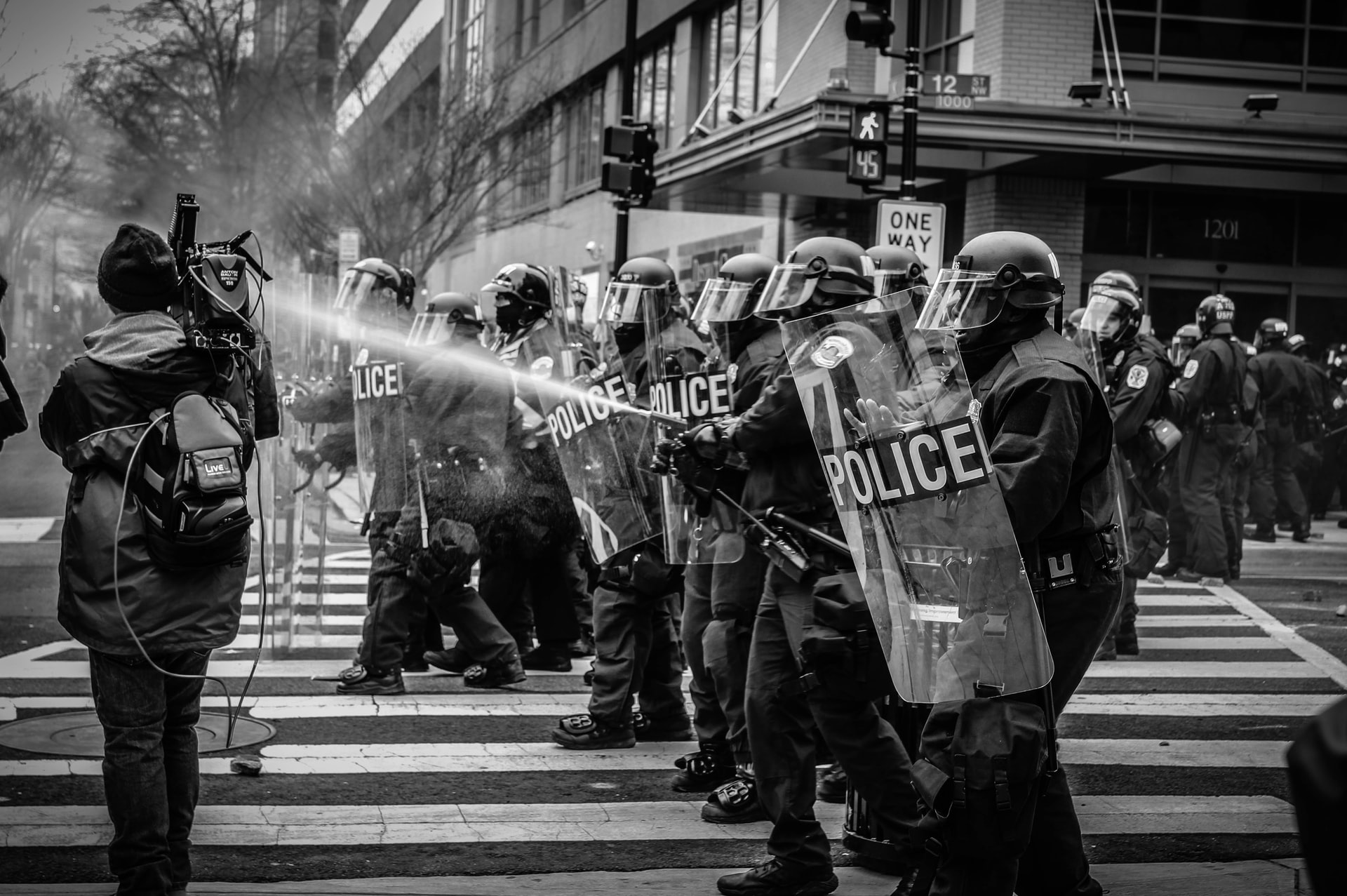
The 20 Critical Commandments of Crisis Communications for Small Businesses
The recent public violence, demonstrations and Coronavirus has taught small businesses many difficult lessons. One lesson stands out more than any – how poorly prepared smaller businesses are for facing a protracted crisis, even when they have a financial cushion to weather a critical event.
COVID19 has delivered a perfect storm of crises for businesses, generating significant medium- to long-term impacts for many. For some, the virus has been either a Black Swan or Grey Rhino, as explained by Aviva Investors. According to the Society for Human Resource Management, 52 percent of small businesses expect to be out of business within six months. A Wall Street Journal article projects that the American economy will contract between 6% and 7% this year with unemployment “lingering in double-digit percentages.”
Despite the doom and gloom, the same WSJ article observed that “it appears conditions in some corners of the economy aren’t getting worse, and might even be improving,” with “high-frequency indicators showing a burgeoning rebound in terms of how much people are spending,” according to Gregory Daco, Chief U.S. Economist at Oxford Economics.
This creates a problem. As Federal Reserve officials warn, “Conditions could deteriorate again if a second outbreak emerges as more Americans come out of their homes and return to a more normal life.” This problem is obviously multifaceted, with one key challenge being how prepared small companies are for a crisis despite the significant threat that the first wave of the coronavirus posed.
The Voice of America reported that the recent acts of public violence caused economic damage that “may persist for decades” and impact local businesses in cities across the United States where rioting and unrest occurred. According to Fox Business, the civil unrest that erupted across “America following the death of George Floyd is likely to slow the U.S. economy’s comeback from the COVID-19 pandemic.”
So how should small businesses better prepare for their next crisis, whether it be a second wave of public violence or the coronavirus, a data breach, a power outage, or negative publicity? These 20 commandments can help:
1. You shall always monitor your environments for signs of risk.
Most crises are either manmade, naturally occurring, or technological. To improve response times and crisis management capabilities, crisis management teams must proactively monitor their internal and external environments to identify signs of risk that could easily escalate. This includes identifying threats that supply chain partners, business ‘neighbors,’ and city authorities are facing, issues the media are covering, global events, social media chatter, etc. Companies should monitor issues and events that they directly experience, that occur in their various environments, and that may not be a crisis yet but could easily become one:
Manmade: public demonstrations, utility work, epidemics/pandemics, strikes, employee dissatisfaction
Technological: power outages, ransomware attacks, mechanical failures, e.g. HVAC system
Naturally occurring: bad weather, earthquakes, intense heat, cold
When a potential risk is identified, it should be monitored and tracked closely.
2. You shall always expect the unexpected, and you shall never drop your guard.
“It will never happen to us.” “We are not worried because we have a crisis plan.” Both of these statements are not only careless but dangerous. Being crisis-ready goes a lot further than just having a crisis plan and exercising and testing it regularly; it’s about wearing a crisis readiness hat all the time, constantly looking for threats and risks. Crisis readiness and response must become a company culture, a mindset, and a health and safety habit. Not only must the crisis management and communications team know what they need to look for and how to respond, so too must all employees. Your business is only as crisis-ready and resilient as your weakest link.
3. You shall engage your external stakeholders and partners.
Many companies make the mistake of developing and testing their crisis communication plans in isolation. But in fact, it is best to involve stakeholders in planning and testing. Remember, a crisis in a strategic partner’s company could cascade down their supply chain into your company. Know what they plan to do when a critical event occurs and establish an alert and communication component in your crisis plan linked to their crisis communications plan. In addition, a crisis in your company could move up or down your supply and value chain into your partner’s and supplier’s business. Establish an alert and escalation procedure to notify them that you are in a crisis.
Involve other partners and stakeholders in your planning process as appropriate and relevant, such as your local hospital, fire department, police agency, physical security company, cyber security provider, and/or business continuity provider. No crisis occurs in a vacuum. By involving stakeholders and partners, you will position your company as responsible and risk averse.
4. You shall ensure your PR crisis planning is supported by company executives.
Ensure that C-suite executives support PR crisis planning and business continuity and emergency management planning, among others, by endorsing the team’s plans and efforts. Planners need the adequate resources and access to audit your business, write the PR crisis plan, and test and exercise it on an ongoing basis. The C-suite signals how important crisis planning is and how supported it is at the very highest level. Top office support ensures the crisis communications and management teams have the resources to deal with any eventuality and do not have to jump through unnecessary hoops to obtain the assets needed to manage a full-scale PR crisis.
5. You shall always have a PR crisis plan and keep it handy, and you shall have other plans and keep them handy as well.
Responsible management and practitioners of good corporate governance in the United States must ensure that their companies and organizations have a fully-fledged PR crisis plan with the ability to deal with all eventualities. The plan should be based on a bespoke vulnerability and risk audit and impact planning, and it should comprise all relevant sections and components the company would need to manage the crisis relevant to industry requirements. Relevant templates could be included for ‘tweaking and massaging’ at the appropriate time. The plan must support essential plans such as business continuity, disaster recovery, cyber security, and emergency management, among others.
You will need hard and soft copies of your crisis communications plans. If you have your crisis communications plan stored on your computer and the power goes out, what will you use? Don’t forget that both need to be updated at the appropriate time.
6. You shall avoid the need to have a crisis plan for every potential scenario.
Some companies may be tempted to plan for all scenarios. This is not only planning overload, but it is a tedious and longwinded approach that will chew up resources, require nonstop updating, and be time consuming and expensive. Better to plan for the impacts of a crisis and the resources needed to manage the crisis and its impact. Generally speaking, many crises will have the same impact or a similar sequence of impacts and require the same resources. For example, think of how many crises will cause your facility to close down for a period of time, think of how many crises will force your employees to work offsite from home or a business recovery site, think of how many crises could result in employee injury or death. Now determine the impact of the crisis and the resources needed to manage the impact.
7. You shall practice and train–and you shall like it.
One of the most important components of being crisis-ready is holding regular crisis practice exercises for your crisis communications plan. Businesses and organizations are advised to conduct at least one tabletop exercise per year and one major exercise every 12 to 24 months. Consider including external stakeholders in your major exercise. It is only through these drills that weaknesses in the crisis plan can be identified and strengthened. In addition, the exercises hone the skills of the crisis team members so that when an incident happens, all players are focused and they know their roles and responsibilities. Practice exercises are also important because if one team member is ill or unable to attend a crisis team meeting, fellow crisis team members will know exactly what needs to be done to plug any gaps.
8. You shall have a crisis management team.
A crisis management team forms a critical part of dealing with the issues at hand. They bring expertise and different types of knowledge and problem-solving skills to the situation. Typically, the crisis management team is made up of a cross-section of senior managers from across the company or organization that operates with board approval and is empowered by the board. Allowances must be made for external consultants who can form part of the greater crisis team; these could include social media consultants, lawyers, engineers, psychologists, religious leaders, etc. The entire crisis management team and external consultants need to be media and crisis trained. In addition, the crisis management team should have an appropriately resourced designated crisis operations center from which it can manage the crisis. Crisis management teams need to be ‘ready to go’ 24/7.
9. You shall hasten slowly and with urgency.
The timing of the crisis communication team’s response is crucial. They cannot respond to early because they can make things worse – there may have been enough time left for the crisis to resolve itself. They cannot respond too late because they risk losing control of the situation and will miss the opportunity to get out in front of the bad news.
To ensure that the crisis communications team communicates at the right time they must be able to identify when an event is an issue or a crisis. They have to also understand the lifecycle of crises and be able to ‘read situations’ and identify the crucial hints that may point to ‘what is likely to happen next.’ Even this is not foolproof as crises have a mind of their own.
10. You shall have one consistent spokesperson.
One of the more damaging elements in a crisis is a constantly changing spokesperson. The media and the wider public will interpret multiple spokespeople as a sign of a deeper crisis occurring behind the scenes. The spokesperson should be chosen based on his or her seniority, industry and corporate knowledge, media skills, and ability to engage the public and engender a feeling of trust and understanding. In most circumstances, but not all, the spokesperson will be the CEO or COO of a company with these skills. Depending on the circumstances of the crisis, the spokesperson may have to share center stage with various third parties called in to help manage the situation, including police, doctors, forensic experts, lawyers, and accountants. Always have a backup for your spokesperson in case they become sick or resign mid-crisis!
11. You shall tell it all, you shall tell it fast, and you shall tell it honestly.
There are three cardinal rules in PR crisis communications: as soon as something happens, tell it all, tell it fast, and tell it honestly. Follow these rules and you will immediately gain control of the message by getting out in front of the bad news. Keeping quiet and letting the press, staff, or clients break the news will immediately weaken your control of the situation. Avoiding timely and accurate communication empowers the rumor and speculation mill. Never forget this because, as you are managing the crisis, you do not also want to have to put out secondary fires that could have been avoided.
As updated information and facts become available, disseminate them widely. Depending on your crisis, government requirements, and the stage of the crisis, you may have to let a spokesperson from law enforcement or an industry regulatory officer communicate about the crisis.
It is advisable in most, but not all, situations to let your staff have access to the facts either before they are released to the outside world or at the same time. Obviously, in certain circumstances specific types of information must not be made available immediately; you must, however, inform the media and wider public of the reasons why this information cannot be made available.
12. You shall love the media and embrace them.
During a crisis, many mistakenly see the media as the enemy. They are not! Broadcast, narrowcast, online, print/traditional, and social media must be seen as a conduit to deliver essential messaging and information to all publics, both internal and external to the company or organization in crisis. If your company is front and center in any crisis that attracts media attention, expect media scrutiny to be part of the deal. And, irrespective of the type of news that needs to be communicated, the media must still be seen as a critical information audience and conduit. The spokesperson must deal with difficult questions in press conferences and one-on-one interviews. The spokesperson must be accessible for interviews or comments at the last minute or when the media are on deadline.
Embracing the media includes the social media universe that must receive the same information that the print and broadcast media receive. Many companies make the mistake of wanting to communicate on as many social media platforms as possible. This can become cumbersome and pressurizing in the eye of the storm. Consider focusing on two or three platforms that your key stakeholders consume, and resist the urge to respond to every single post made. For example, if your company is facing a Twitter storm, will you really answer all 22,000 negative posts?
13. You shall communicate widely and consistently.
As soon as it becomes apparent that a crisis has occurred or is likely to occur, immediately collect and collate all the necessary facts. Once the facts have been digested, formulate uniform information and messaging. Then break the news yourself – get ahead of the news media and control the initial message.
Depending on the situation, the company spokesperson should ideally first communicate internally to all staff and then externally to stakeholders, including media, clients, suppliers, shareholders, local communities, and social media followers and antagonists using the most appropriate channels.
In certain circumstances, it will be necessary to break the news to internal and external audiences at the same time. Regularly provide updates fed to all audiences, with consistent messaging. If there is no news at the time of the next update, say so: when companies and organizations in crisis say nothing, the media and other recipients may think there is a deliberate attempt to cease or manipulate communication.
Above all, never utter the words “no comment.” If no information can be made public, then explain why it cannot be made public at the time.
14. You shall refuse temptation to speculate and muddy the waters.
Company spokespeople are often tempted to either speculate why something happened or, as a strategy, to make things appear unclear, simply because they want the wider public and the media’s attention diverted from their business or from the people involved in the crisis–including themselves. This deflection strategy is dangerous because when the real facts are exposed, the company may face a secondary crisis–that of trying to explain why it made certain statements before official findings were made public. Spokespeople should simply say what they know and are allowed to legally disclose, not what they think or what they want the market to think.
15. You shall convey emotion and empathy.
Crisis management is not just about standing up, communicating, and then giving an update an hour or day later. It’s also about emotion, showing that you care about and empathize with the people feeling pain, and that you understand their position. If a spokesperson or company representative appears cold, unemotional, and stony faced, the company and its brands can be seen as insincere and uncaring. Even in the most difficult circumstances, simple gestures, reassuring comments of commitment to sort out the problem, and/or statements of condolences go a long way to reassure the greater public. By the same token, overdoing the drama will make a company look insincere or seem as though it is trying to hide something. Remember to always put people first. Lives cannot be replaced; profits and equipment can.
16. You shall stare the devil down and be very brave.
When a crisis hits, many company executives practice ostrich management, either burying their heads in the sand or trying to sidestep the issues and hoping the crisis—and the media—will simply go away. Reality paints a different picture. The best way to manage a crisis is to meet it head on and do whatever it takes to protect your brand and retain as much public trust as possible. While proactive crisis management can sometimes turn a crisis into an opportunity, the pursuit of that opportunity must not be the overarching objective.
Do the right thing and face the crisis square on. Be honest and tenacious, act with speed and clarity, and communicate clearly. Media, stakeholders, and employees will note your integrity.
17. You shall see PR crisis planning as a business investment, not a chore, and you shall never forget this.
PR crisis planning is not a chore or a waste of time. When you are staring the crisis devil down and ready to do battle because you have a plan that is tested and exercised, you will feel confident and will make sound decisions. A real return on investment is only attained when a crisis occurs and plans are activated that help protect the business, its reputation, employees, and ultimately its future. Seeing crisis planning as a chore could also result in a lackluster effort to become crisis ready that could lead to the potential demise of your company or career. Get planning!
18. You shall maintain accurate crisis records.
As soon as active crisis management begins, crisis management teams should keep a crisis log of steps taken. This is important from compliance, governance, risk management, and legal perspectives for three reasons: First, your company may have to prove that it managed the crisis correctly to insurers and lawyers. Second, your company may have to account for its actions to regulatory bodies. And finally, when you conduct your post-crisis communications and crisis management postmortem, you will need records to review to determine both errors and positive solutions.
Clearly there is an art to noting all key actions. You cannot be so pedantic as to note every time the wind changes direction, but you should maintain records of key actions and event responses. All key meetings and discussion points should be noted, media logs maintained, and all internal and external correspondence preserved. Work with your lawyers to determine which data you need to retain.
19. You shall invest in a postmortem.
When the crisis is over, you cannot assume that you know what was managed well and what was managed poorly. It is time to carry out a full postmortem of how the entire crisis was managed. The crisis team should be given time to review records and media coverage, then meet to review what worked and why, what did not work and why, what can be kept the same, what needs to change, what resources are needed for future crises, etc. The postmortem is critically important: it contributes to the framework of the next crisis communications plan.
20. You will not assume it’s over when it’s over…because it’s actually just beginning.
It is imperative that you do not assume that when the crisis is over, your job is over. Technically a crisis manager’s job is never done. When the crisis is over, you cannot take your eye off the ball: it is time to start preparing for the next crisis. This is when you take the new crisis plan, test it and exercise it, put your crisis communications team through a new round of media training, and ensure that you are monitoring your environment and have the resources to deal with the impacts of a crisis.
To continue to survive, and even thrive, we need to realize that crisis communications planning is an ongoing endeavor that every company and organization must invest in. Operating in today’s markets without any formal crisis communications plan and strategy creates a massive operational and reputational risk. In fact, it borders on irresponsibility. Crisis communications plans help to bolster confidence, increase resilience, and grant a company better odds to face hard realities and remain in business in the long term.
If you don’t have an up-to-date crisis communications plan, what are you waiting for?
— ENDS —
About Fortress Strategic Communications:
Fortress Strategic Communications provides specialized strategic public relations consulting to companies that offer products, services, and solutions designed to manage and mitigate all types of risk, safety and security. Typical clients are active in the public safety, physical security, homeland security, business continuity and disaster recovery and emergency management domains. FSC also provides public relations counseling to startups looking to enter the broader enterprise risk management arena. The company draws on their executives combined 20 years of global experience in a broad array of vertical markets. For more information please visit www.fortresscomms.com or contact us via info@fortresscomms.com
Further Media Information:
Evan Bloom, CEO
Email: info@fortresscomms.com
Phone: 315-744-4912







